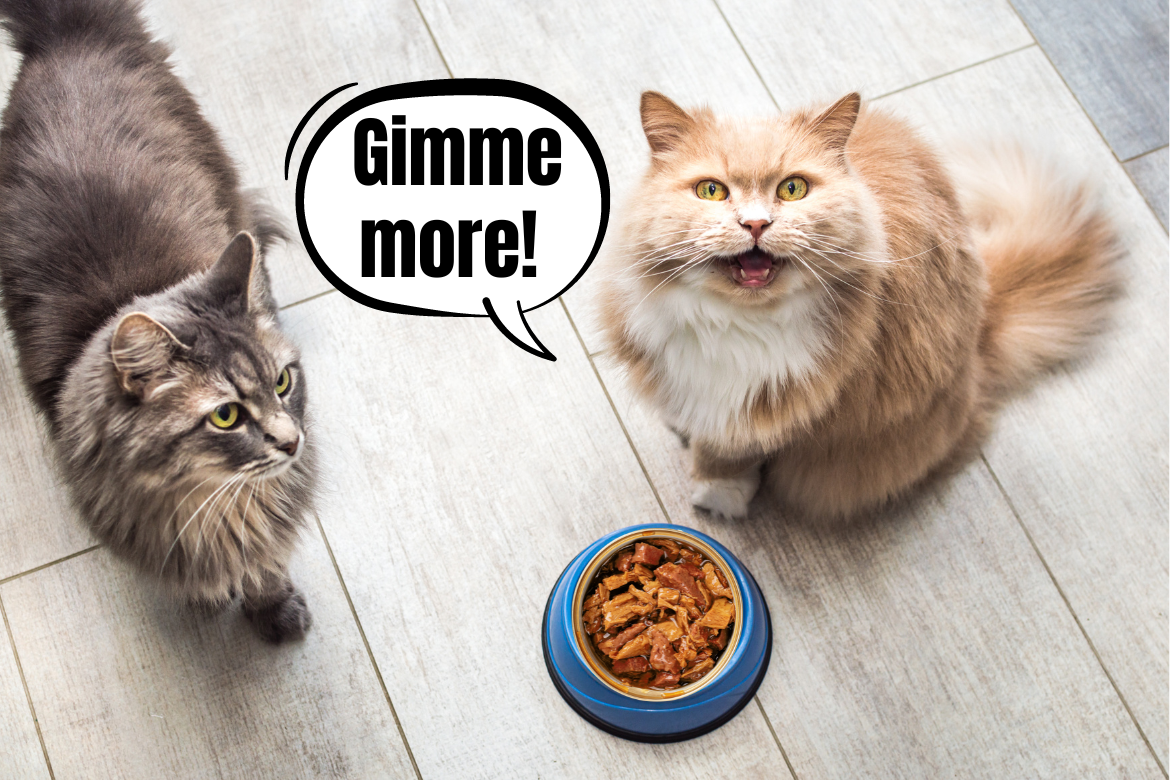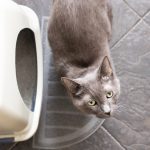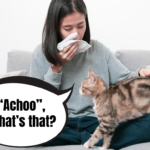Cat eating habits vary. There are felines who will happily jump to a full bowl and lick it clean and those who see a bowl half full and decide it’s actually empty. Sounds familiar, fabCat? Today on the blog we’re exploring the topic of cats abandoning their food bowls and possible causes of cats not finishing their meals. Want to know why your cat meows at the bowl even though there’s still food in it left and if you should worry? Stick with us 🙂
An empty bowl, a full bowl – how do cats see the contents of their plates?
To start things off, let’s look at portions that we serve our cats at mealtime. Cats have very specific dietary needs – their bodies are made to eat small portions frequently during the day which is why they often don’t finish everything that we put in their bowl. And there are cats, of course, who have no issues emptying the entire pouch in one go, but to keep them healthy and feeling well, serving a few smaller meals throughout the entire day is recommended by both veterinarians and feline dietitians.
But what actually happens when we serve our cats too big of a meal? We’ve got a few possible scenarios here:
- Cat eats everything all at once. Some cats don’t have strong self-control when it comes to food portions. Regardless of how much they get in their bowl, they will eat everything and likely meow for seconds. Unfortunately, it’s a quick route to obesity and it can be quite dangerous to the cat. With felines who have a tendency to eat everything, free feeding is not recommended.
- Cat eats as much as they need to but never finishes the food they leave behind. It’s quite typical for cats who have an appreciation for fresh and aromatic food. Their food preferences strongly rely on their sense of smell and if the portion of food they left in the bowl stays there for too long, the leftovers don’t appear tasty and ready to eat. While some cats couldn’t give two fluffs about it, for others a bowl half-full is, in fact, empty. And the leftovers often end up in the bin as wet food shouldn’t really stay out in the bowl for too long.
- Cat eats the leftovers within a few hours from the initial meal time. A cat like this is a true gem. If you work away from home and can’t serve your cat food every 3-4 hours, a cat that doesn’t have issues with finishing their meal later is a great buddy for you. A cat who is able to dose their food on their own will eat as much as they need to in one go and later on go back to the bowl to eat the rest. If the food doesn’t spoil (which may happen, especially in the summer), you have nothing to worry about.
Cats can change their mind, of course, and one day eat all the leftovers just to refuse to touch them the next day. It’s completely normal. The problem could also be not the size of the portion itself, but the flavor of the food, its structure, or the bowl – if it’s too deep and irritates the cat’s whiskers, they may not want to spend too much time at the bowl and stop eating when it gets uncomfortable.
And now it’s time to check what you can do to not worry about the food getting spoiled, serving portions that are too big, and simply wasting cat food.
How to teach a cat to eat the entire meal?
Now that we know at least a few reasons for cats to leave food in the bowl, we can surely find a few solutions to stop them from doing that.
- When portions are too big, try making them smaller by giving your cat more frequent meals. We know it may be difficult if you’re out of the house for longer periods of time, but if you are able to feed your cat 3-4 times a day instead of 2 bigger meals – even a small change like that can make a huge difference!
- When the cat doesn’t finish the meal even after getting smaller portions. That can happen and the cause is often the flavor of the food or the bowl that’s not fit for the cat’s needs. You can solve the problem by giving your cat the same food but on a completely flat plate (they’re much more friendly for a cat’s whiskers) and if your cat still doesn’t feel like eating, the issue is probably on the flavor side of the food. Remember that cat preferences can change and it’s always good to have emergency cat food that your feline friend will eat no matter what. Remember: cats are able to starve themselves to death if they get food that they simply don’t like and won’t eat.
- When a cat gets distracted during a meal. We might often not realize that the circumstances in which we give our cats food are not insignificant to how quickly the cat cleans their bowl. If your cat eats on the kitchen floor while the entire family walks around them trying to make their own breakfast, the cat might simply give up on finishing their meal not feeling fully safe. Think about serving your cat meals where they can eat in peace – in the bedroom, a quiet corner of the dining room, or your living room. We wouldn’t like anyone walking around our plates either.
- When a cat snacks in between meals. Cats love snacks and we love spoiling them. But every snack brings extra calories to the daily meal count. If your cat doesn’t finish their meals, think about limiting their snacks during the day. In contrast to good quality wet food, even the best snacks don’t have the full nutritional value a cat needs in their everyday diet – as the name suggests, snacks should be given as an extra treat, not a substitute for a full meal.
There’s not just one method to “teach” a cat to finish their meals – depending on the reason, the cat’s character, and their eating habits, going from a half-empty bowl to one licked to the last drop of food requires patience, cleverness, and sometimes even bribes. Who has never sprinkled some tuna over food their cat won’t eat, be the first to throw a fluff ball.
When should you worry?
A reason for a cat to leave some food in their bowl we didn’t mention yet today is, of course, health issues. If your cat doesn’t finish their meals and eats too little in general, it’s a good time to take them for a vet check-up. Cats are not made for starving – though a few hours without food is not the end of the world when we get to the 24-hour mark or longer, we risk our cat having serious health issues. Starving leads to liver steatosis and insufficiency, which is why leaving a cat to starve is never an option regardless if they stop eating because of health issues (and lack of appetite) or simply refuse to eat the flavors we serve them.
A cat might give up eating because of dental problems, gut issues, hairballs, urinary tract issues, kidney problems, and other health problems that lead to diarrhea, vomiting, and general weakness. And regardless of which one you suspect, a consult with the vet is a must. A sign as strong as a cat starving is never to be ignored.
And now a question for the reader: which group do your cats fall into, fabCats? Are they licking their bowls clean or always leaving some food for “later”, never actually finishing it? Let us know in the comments and share your tried and true ways of convincing a cat to eat.




